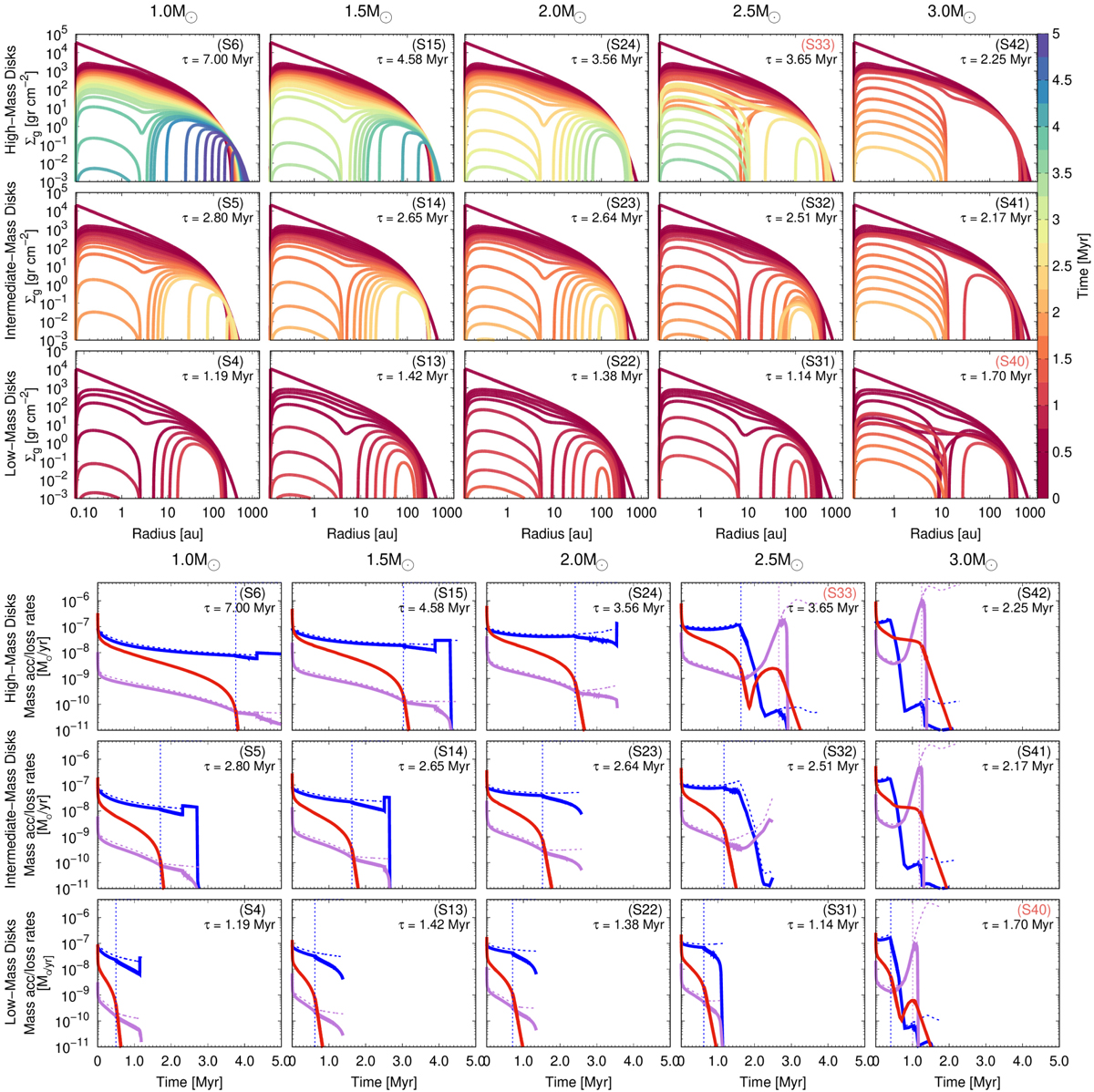Fig. 2

Download original image
Same as Fig. 1 but for discs with α0 = 10−3 and gas disc profiles plotted every 0.15 Myr. For this intermediate value of the viscosity parameter, we only predict classical inside-out disc dispersal for the most massive discs around the least massive stars (S5, S6, S15). In the majority of cases, the discs dissipate according to homogeneous disc evolution, i.e. the inner and outer discs disappear nearly simultaneously (S4, S13, S14, S22, S23, S31, S32). For the initially more massive discs around the most massive stars (S41, S42), we predict the outer disc will disappear clearly before the inner disc; that is, in these cases, the viscous timescale of the inner disc is longer than the photoevaporation timescale of the outer disc. A particularly interesting evolutionary pathway is that predicted by S40 and S33. Following the gap opening through X-ray photoevaporation, the outer and the inner disc reconnect as the X-ray emission decreases and the final disc dispersal is caused by FUV photoevaporation. We termed this pathway revenant disc evolution (see Sect. 3.4 for details).
Current usage metrics show cumulative count of Article Views (full-text article views including HTML views, PDF and ePub downloads, according to the available data) and Abstracts Views on Vision4Press platform.
Data correspond to usage on the plateform after 2015. The current usage metrics is available 48-96 hours after online publication and is updated daily on week days.
Initial download of the metrics may take a while.


